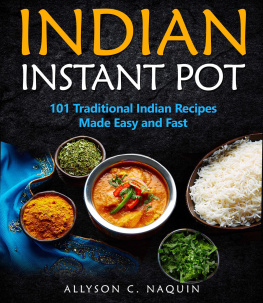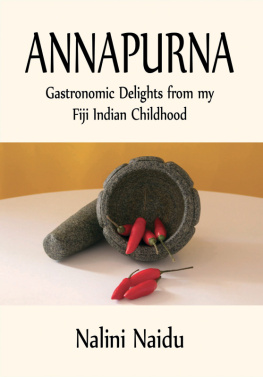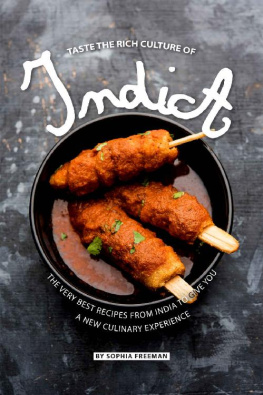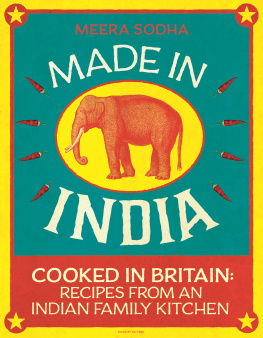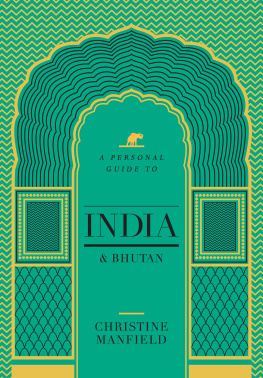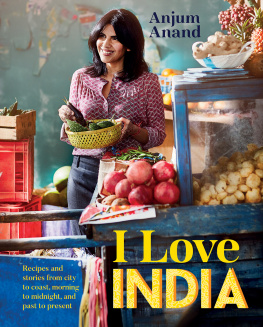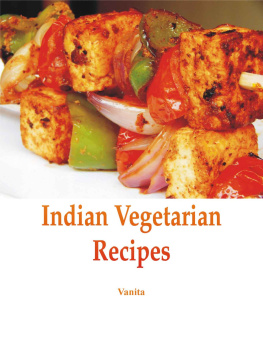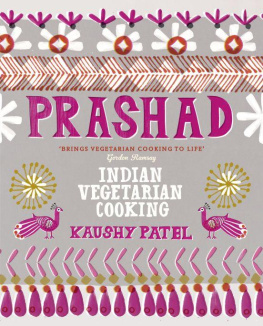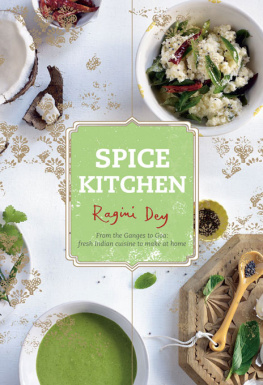Christine Manfield is one of Australias most celebrated chefs a curious cook, a perfectionist inspired by the culinary melting pot of global flavours, and a writer whose successful, award winning books A Personal Guide to India and Bhutan, Dessert Divas, Fire, Spice, Stir, Paramount Cooking and Paramount Desserts have spiced up the lives of keen cooks everywhere.
As one of Australias leading culinary ambassadors, her professional life as a restaurateur culminated in three award winning restaurants: Paramount in Sydney 1993 to 2000, East@West in London 2003 to 2005 and Universal in Sydney 2007 to 2013. She continues to collaborate with chefs and industry professionals in Australia and overseas.
An inveterate traveller, Christine hosts bespoke culinary adventures to exotic destinations including India, Italy, South America, Bhutan, France and South East Asia. Having eaten her way around India for more than two decades, she is a passionate and erudite guide to the food of this endlessly fascinating land.
www.christinemanfield.com.
To Jamshyd Sethna, a kindred spirit whose generosity, vision, wisdom and passion for his country my country is yours have made this extraordinary journey possible.
Full of adventure and surprise, Indias hidden treasures unfolded before my eyes...
Thank you.
CONTENTS
INTRODUCTION
With India, its difficult to know where to start, how best to capture its essence. But this book is one story of India, my story of India, gathered across many visits. My insights are informed by the connections Ive been fortunate enough to make with so many different people. The recipes Ive collected along the way reflect the stories of countless mothers, grandmothers, daughters, sons of daughters, brothers, sisters and aunts, as told to me during my travels. So, more importantly, within these pages are their stories. Listening to those stories has been a most nourishing experience, like being enveloped in the generosity of a sari, itself a potent symbol of India.

On each and every visit, I surrender myself to the procession of life before me, as India begins to pulsate through my veins. It is impossible to be indifferent to the worlds largest democracy though it is essential to bring an open mind and a good degree of patience! There is no choice but to jump right in, be brave and grab every exhilarating moment. This is a country where everything happens and anything is possible. Each day is a new adventure, providing another intriguing piece of the puzzle. As soon as I think I have a pretty good handle on it all, something pops up to confound my thinking and make me look at everything anew. But to me, that is just part of the whole Indian experience, the way the place and its people subtly continue to charm, inspire and compel, always daring to challenge. It makes me feel alive.
The art of travel is in allowing yourself to slip your chains. To become, for a time, someone else.
ALAIN DE BOTTON, THE ART OF TRAVEL
India seems to exist in several centuries at the same time, and the tableau of images presented to the curious traveller both bewilders and amuses. Every scene is like a beautiful collision of worlds: a yogi or holy man with a mobile phone pressed to his ear; an iPod sitting in the folded arms of a marigold-festooned deity statue; lucky garlands threaded through the front grilles of the ubiquitous Ambassador taxis; sacred cows ambling their way through the tide of traffic, bullock carts, rickshaws and bicycles, apparently unperturbed by the mayhem around them. There is a saying in India that if you dont believe in God before you experience Indian roads, you will afterwards.
The country is like a living theatre, as daily life in all its forms is played out publicly on the streets and at every street corner. Its a land of paradoxes, contradictions and contrasts, of highs and lows, of beauty and despair, of joy and sadness, of wealth and poverty India has it all in unequal measure. India ranks among the worlds fastest-growing economies, and in cities across the country, glitzy modern skyscrapers and designer-label shops blend seamlessly with ancient bazaars. Existing cheek-by-jowl with such ostentatious wealth are numbing poverty and sprawling slums. In contrast, the rural landscape remains relatively unchanged, its timeless grace and proud traditions a source of captivation for many travellers.

India is a visual feast and a gastronomic paradise, seducing with its food and contagious hospitality. The states of modern India have distinctive food traditions that reflect their regional and cultural heritage. Food preparation is bound up with spirituality, and demands a thorough understanding to appreciate its nuances. Religion underpins the dietary laws of each sect. To the uninitiated, its a minefield to navigate and accommodate but to Indias Hindus, Jains, Muslims, Sikhs, Syrian Christians, Catholics, Parsis and Jews, its second nature, with each respecting the traditions of the others. The countrys culinary tapestry is complex, varied and ancient, underpinned by a masterful and enviable use of spice.
The magic of Indian cooking is in the proper use and blending of spices. It is also important to know and understand the spices that are an absolute must with different kinds of food.
RAJMATA GAYATRI DEVI OF JAIPUR
The unique flavours of Indian cuisine are derived from the astute combination of these spices and seasonings with nutritious ingredients such as leafy vegetables, fruits, grains and legumes. Contemporary cooking has its roots firmly planted in Ayurvedic practice, an ancient discipline where food is respected as a most precious resource in the pursuit of life, health and longevity. Ancient texts prescribe herbs and spices for their inherent curative and therapeutic properties: garlic reduces cholesterol and hypertension, while fenugreek stimulates the bodys immune system. Pepper is a natural antihistamine, and turmeric is used to cure ulcers and give the skin a healthy glow. Fennel, cloves and cardamom are natures mouth fresheners, and asafoetida combats flatulence. Spices such as turmeric, cloves and cardamom have antiseptic properties, while others, like ginger, are good for digestion and heartburn.
Cooks incorporate this knowledge into their everyday cooking. Different spices are used for different seasons, in varying quantities. The refined use of spices, aromatics, herbs, pulses and vegetables results in colours as varied as the womens saris and provides each dish with its unique character and flavour. Masalas are made using a wide variety of spices. In addition to the main dishes, the side dishes and condiments like dals, chutneys and pickles contribute to the overall flavour and texture of a meal. India is indeed a food lovers delight.


